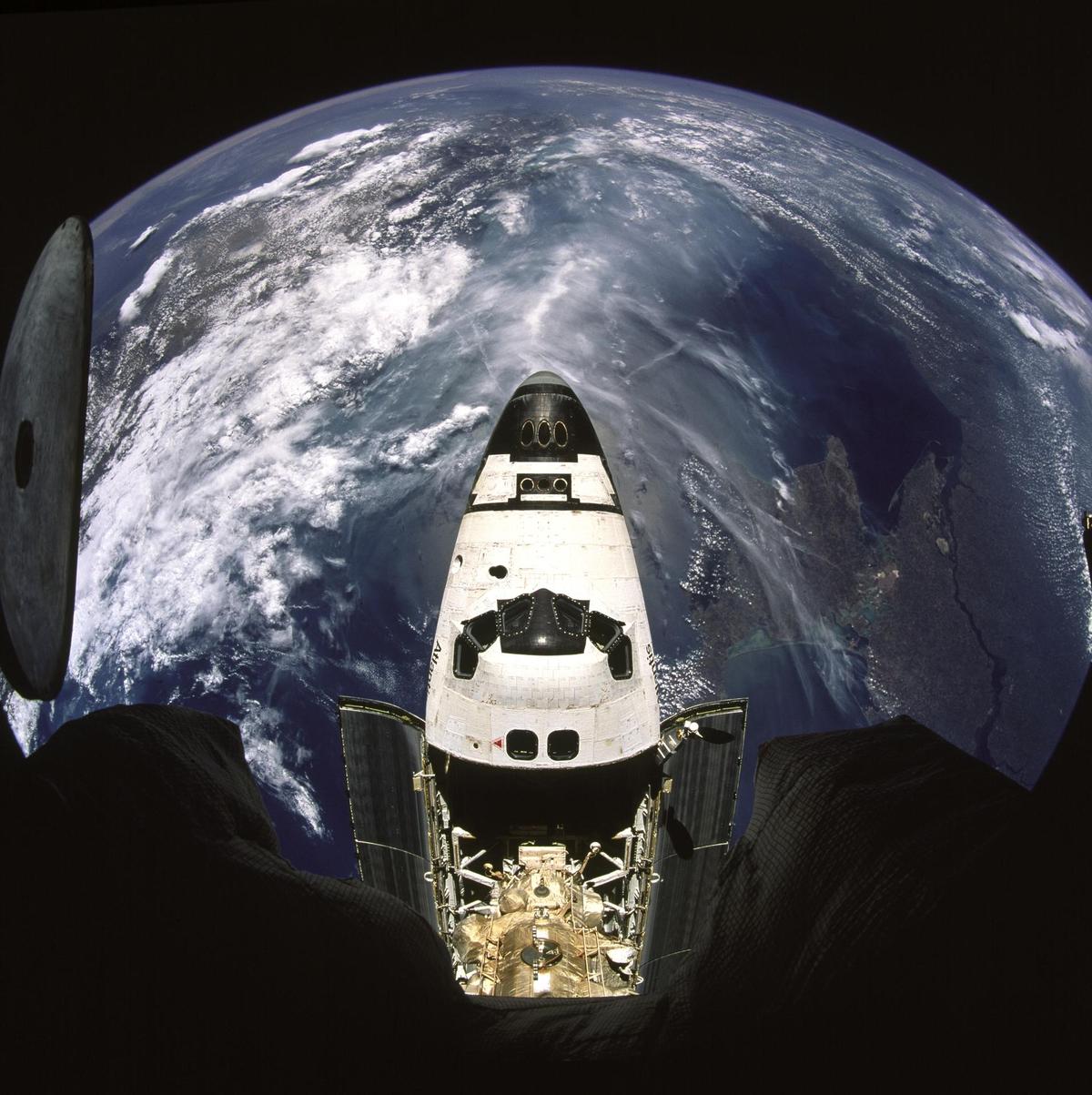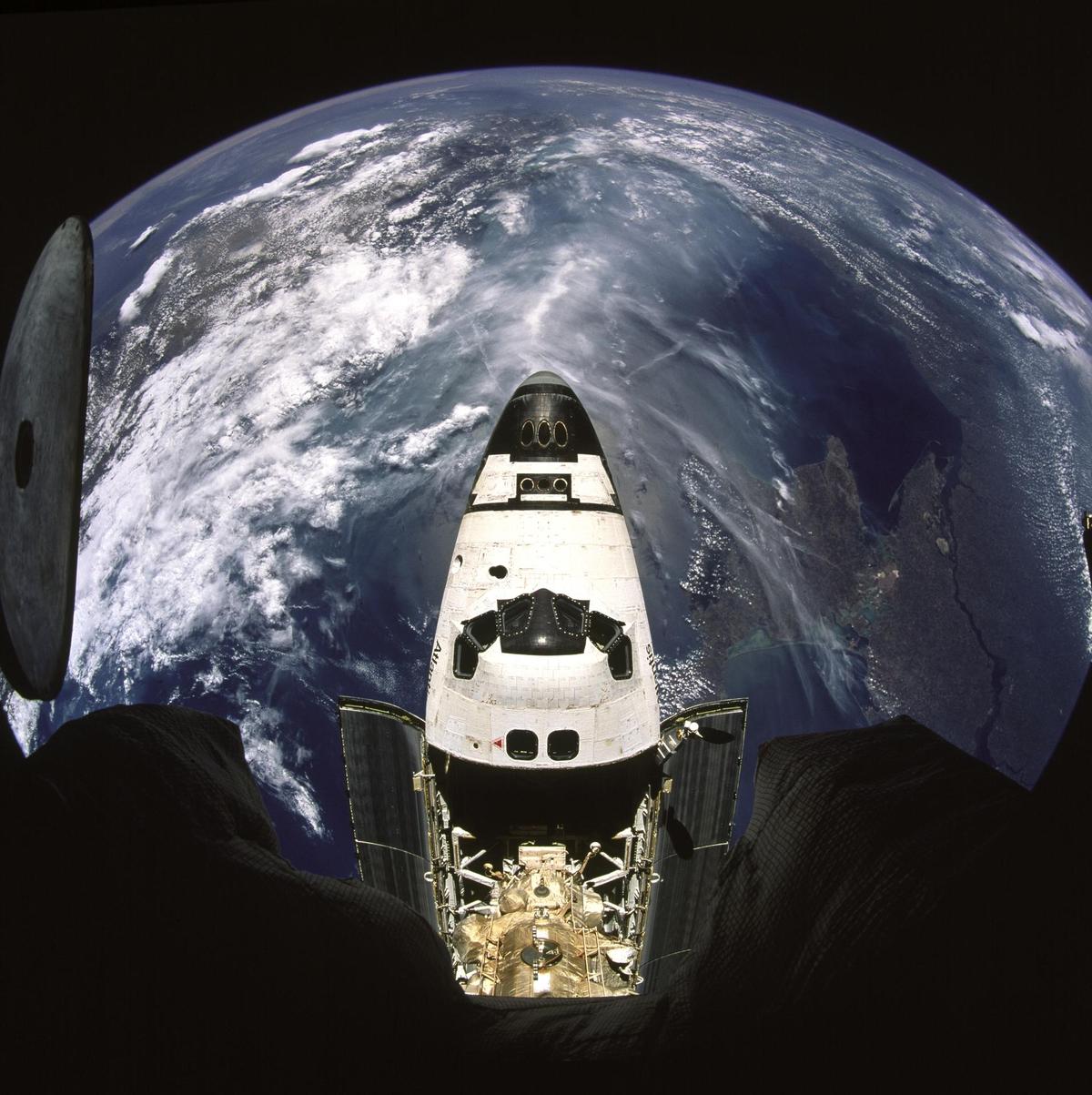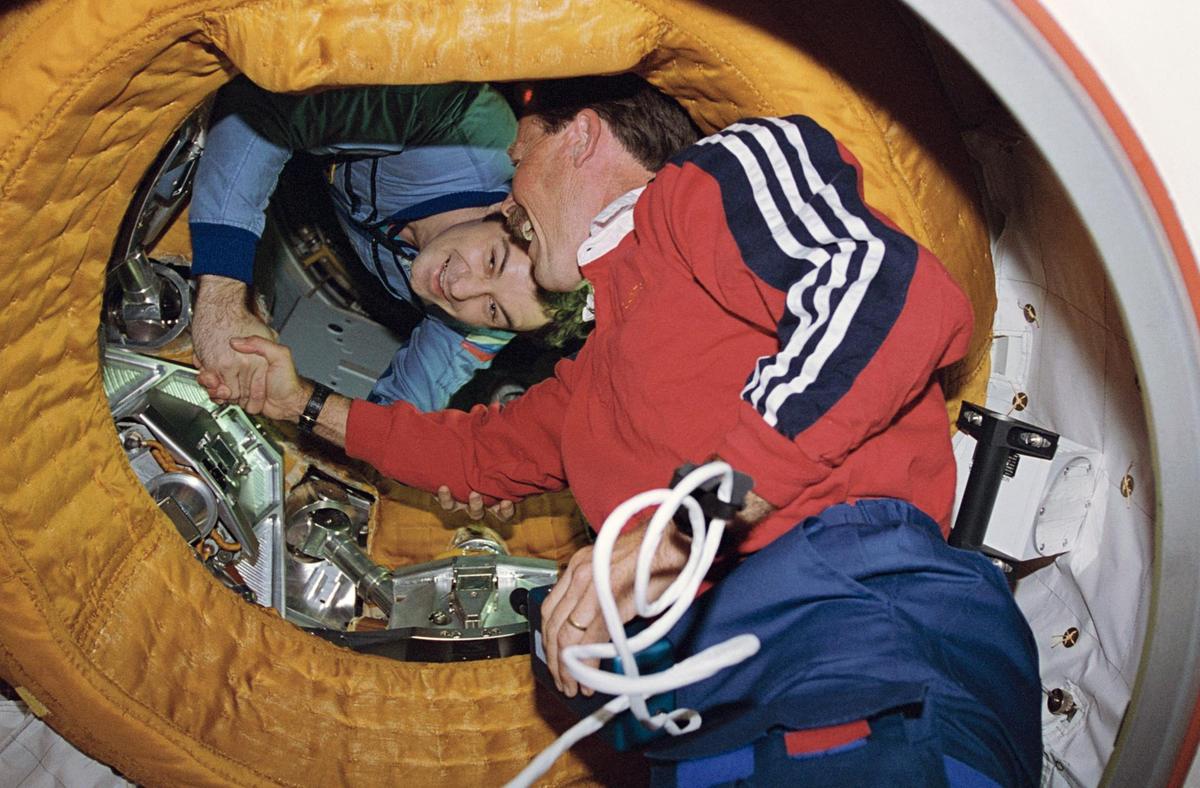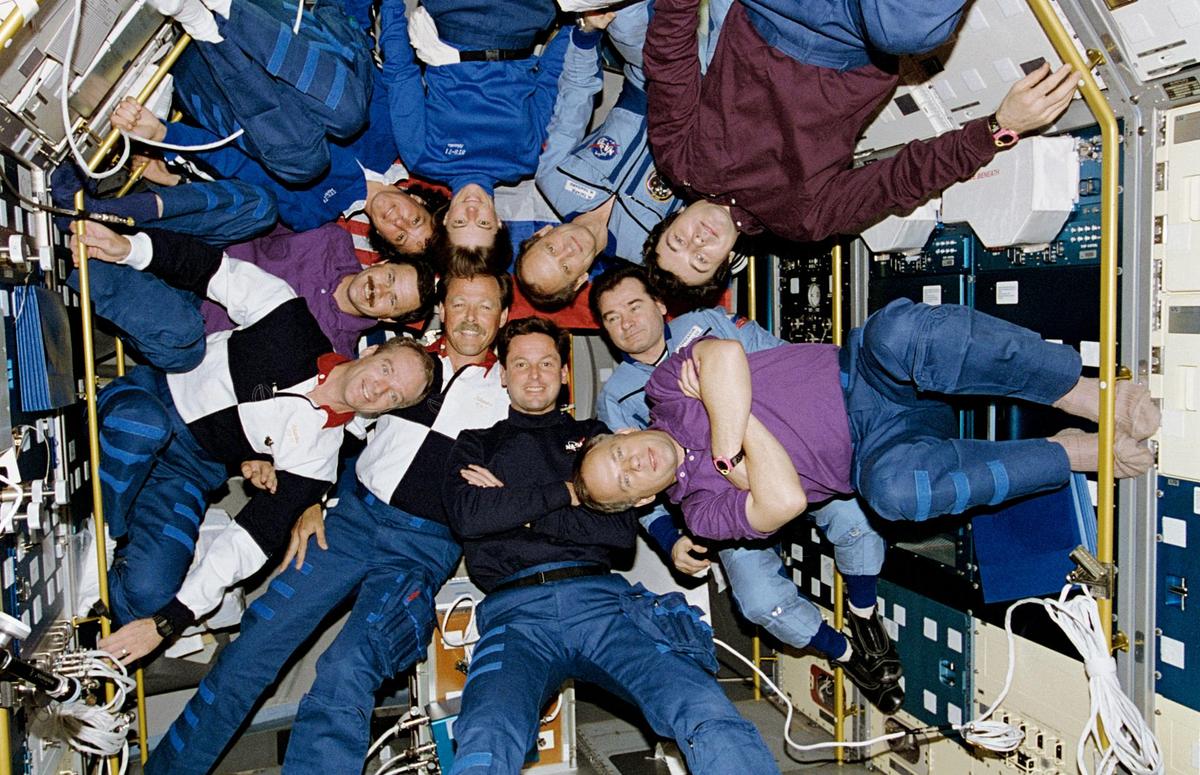When a U.S. shuttle docked with a Russian space station

Former foes cooperate
Fuelled by the Cold War between the U.S. and the Soviet Union, the space race saw the two nations compete to achieve superior spaceflight capability. The end of the Cold War, however, saw the Soviet Union collapse and form independent nations, including Russia, which had been at its core.
Less than five years after the end of the Cold War came about a historic moment of cooperation between space programmes that had been rivals not long ago. Daniel Goldin, who was NASA’s chief at the time, called it the beginning of “a new era of friendship and cooperation” between the two nations.
This cooperation enabled the U.S. space shuttle Atlantis to dock with Russian space station Mir to form what was then the largest human-made object ever to orbit the Earth. And if that weren’t enough, the STS-71 mission was also the 100th human space mission in American history.
Launching and docking
The primary objectives of the STS-71 mission were to rendezvous and perform the first docking between the space shuttle and the Russian space station. Originally planned for May 1995, the launch was pushed to June in order to make room for Russian space programme activities to facilitate the first space shuttle, space station docking. This was done through a series of spacewalks that reconfigured Mir for docking.
The launch, which was then set for June 23, had to be pushed again due to inclement weather. Rainy weather and lightning prevented the loading of the external tank on the day. The stormy weather persisted the following day, and along with a short 10-minute launch window, the attempt on June 24 was scrapped at the T-9 mark. The launch was further moved to June 27, when it took place without incident.
Smooth docking
Compared to the launch, the docking was much more straightforward, even though it was the first time ever that these two were coming together. The entire process took two hours, but it was completed at 1 p.m. GMT on June 29, just two seconds off the targeted arrival time!
The docking was accomplished using the R-Bar or Earth radius vector approach as it allows natural forces to brake the orbiter’s approach better than the standard approach directly in front of the space station. Additionally, this method helps minimise the number of orbiter jet firings needed for approach.

Fisheye view of Atlantis from Mir space station, backdropped against a half globe of Earth.
| Photo Credit:
NASA
As a result, Atlantis closed in on Mir from directly below, with the manual phase of the docking beginning when the shuttle was about 800 m below Mir. The commander of STS-71, Robert L. Gibson, also held the delicate task of manoeuvring the shuttle towards the space station.
When the shuttle was just 250 feet from Mir, stationkeeping was performed, seeking approvals from U.S. and Russian flight directors before proceeding further. Once Gibson moved the shuttle to just about 30 feet from Mir, the final phase of the docking began.
For this final stage, Gibson had to move the Atlantis at a targeted speed of 0.1 feet per second – that’s a rate of no more than a foot every 10 seconds! The closing velocity was approximately 0.107 feet per second at contact and the interface contact was nearly flawless as the lateral misalignment was less than an inch and the angular misalignment was less than 0.5-degrees per axis. The docking had been successfully achieved at a distance of 400 km (216 nautical miles) above Lake Baykal region of the Russian Federation.
What after docking?
With the primary objective turning out to be a splendid success, the astronauts and cosmonauts involved quickly turned their attention to other matters without further ado. Linked together and orbiting some 400 km above Earth, Mir and Atlantis – weighing nearly 225 tonnes – formed the largest spacecraft ever in orbit.

Astronaut Robert L. Gibson, STS-71 commander, shakes the hand of cosmonaut Vladimir N. Dezhurov, Mir-18 commander, on June 29, 1995.
| Photo Credit:
NASA
When the hatches on both sides were opened, STS-71 crew members passed into Mir for the welcoming ceremony. After greeting each other and clasping hands to mark the moment, gifts were exchanged formally. While the astronauts from Atlantis offered chocolates, fruits, and flowers, the Mir cosmonauts welcomed with bread and salt – traditional Russian welcoming gifts.
On that day itself, the first shuttle changeout of a Mir crew took place as Mir 18 crew transferred responsibility for the space station to Mir 19 crew. The two crews switched spacecraft once the transfer was officially complete.
Scientific investigations
Over the next 100 hours, the U.S. and Russia jointly conducted nearly 15 biomedical and scientific investigations in the docked shuttle-station, in addition to transferring equipment to and from Mir. The experiments conducted covered seven different disciplines: cardiovascular and pulmonary functions; human metabolism; neuroscience; hygiene, sanitation and radiation; behavioural performance and biology; fundamental biology; and microgravity research.
Three three Mir 18 crew members, meanwhile, followed an intensive programme of exercises. These were to help them prepare to re-enter an environment with gravity after over three months in space. Among the things transferred from Mir to Atlantis were also all the samples from the Mir 18 crew members, including urine and saliva samples, blood samples, surface samples, air samples, water samples, and even breath samples.

STS-71, Mir 18 and Mir 19 crews pose for in-flight portrait inside the space shuttle Atlantis’ Spacelab Science Module.
| Photo Credit:
NASA
After a farewell ceremony on July 3, the hatches on both the space shuttle and the space station were closed 16 minutes within each other. Prior to undocking on July 4, Mir 19 crew briefly abandoned the space station in order to fly away in their Soyuz spacecraft and record images of the Atlantis and Mir separating from each other.
Commander Gibson likened the separation sequence to a “cosmic ballet.” The returning crew of eight landed safely at the Kennedy Space Center on July 7. The STS-71 mission had lasted just 9 days, 19 hours, 22 minutes, 17 seconds, but enough was achieved to talk about it even 30 years later.
Published – June 29, 2025 12:09 am IST







